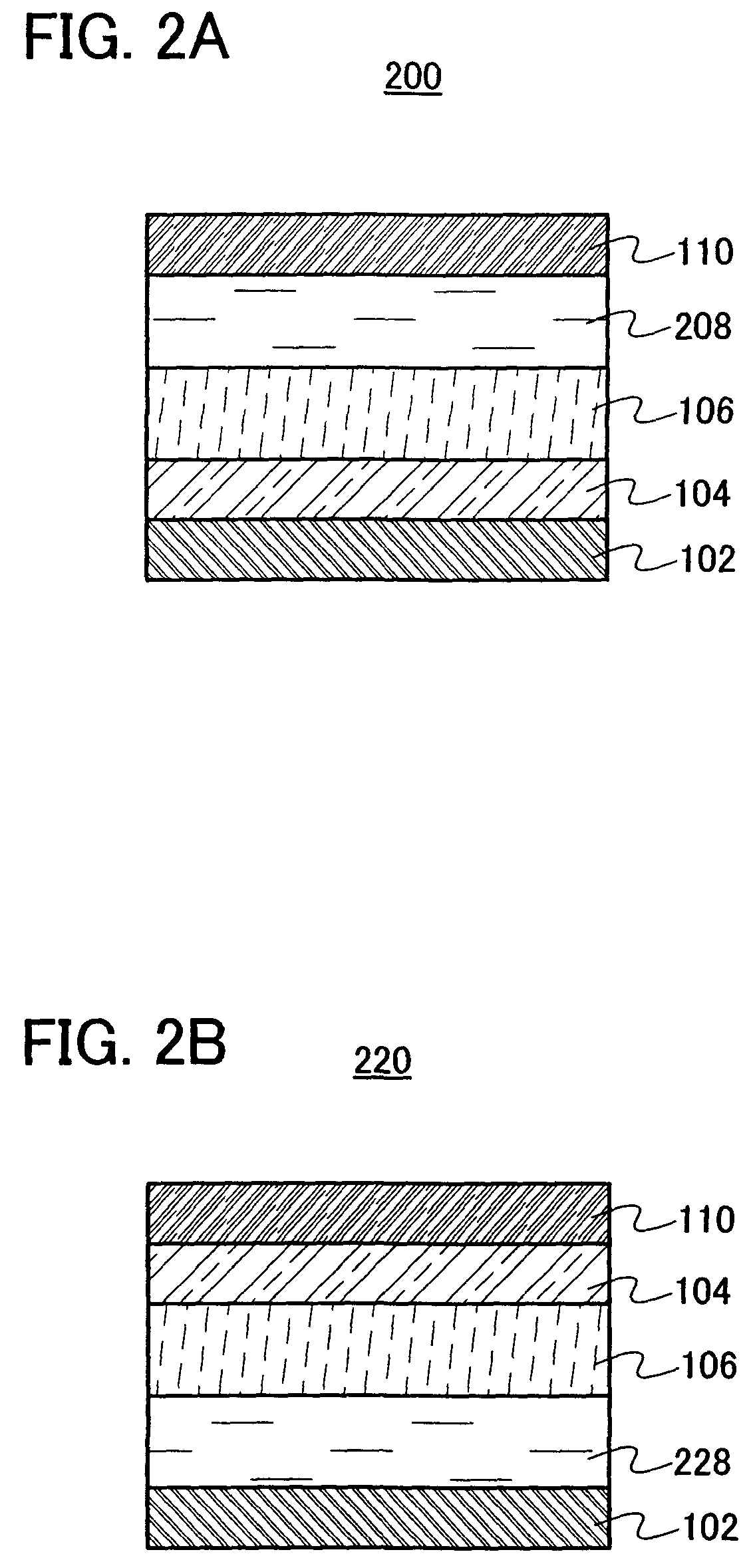Light-emitting element, display device, and electronic appliance
a technology of light-emitting elements and display devices, applied in the field of light-emitting elements, can solve the problems of increasing drive voltage, achieve the effect of achieving target luminance, less electric power, and high luminous efficiency
- Summary
- Abstract
- Description
- Claims
- Application Information
AI Technical Summary
Benefits of technology
Problems solved by technology
Method used
Image
Examples
embodiment mode 1
[0047]An example of a light-emitting element of the present invention is explained with reference to FIGS. 1A and 1B.
[0048]A light-emitting element 100 shown in FIG. 1A has a structure in which a first electrode 102, an electron supplying layer 104, a layer 106 containing a light-emitting substance, and a second electrode 110 are sequentially stacked. That is, in this structure, the layer 106 containing a light-emitting substance and the electron supplying layer 104 which is in contact with the layer 106 containing a light-emitting substance are interposed between the first electrode 102 and the second electrode 110.
[0049]The layer 106 containing a light-emitting substance includes a light-emitting material formed of at least a base material and an impurity element. The impurity element does not include an element included in the base material.
[0050]The base material in the layer 106 containing a light-emitting substance may be a sulfide, an oxide, or a nitride. For example, the sul...
embodiment mode 2
[0098]Embodiment Mode 2 will explain a light-emitting element with a different structure from that in the above embodiment mode, with reference to FIGS. 2A and 2B.
[0099]A light-emitting element 200 shown in FIG. 2A has a structure in which the first electrode 102, the electron supplying layer 104, the layer 106 containing a light-emitting substance, an insulating layer 208, and the second electrode 110 are sequentially stacked. In other words, in this structure, the layer 106 containing a light-emitting substance, the electron supplying layer 104 which is in contact with one surface of the layer 106 containing a light-emitting substance, and the insulating layer 208 which is in contact with the other surface of the layer 106 containing a light-emitting substance are interposed between the first electrode 102 and the second electrode 110.
[0100]Since the structure, the manufacturing method, and the like of the light-emitting element 200 shown in FIG. 2A except the insulating layer 208...
embodiment mode 3
[0111]Embodiment Mode 3 will explain a display device having a light-emitting element of the present invention with reference to FIGS. 4A and 4B.
[0112]The display device shown in this embodiment mode is a passive type display device in which the light-emitting element is driven without particularly providing an element for driving such as a transistor. It is to be noted that FIG. 4A is a perspective view of a passive type display device of the present invention, and FIG. 4B is a top view thereof. Specifically, FIG. 4A is a perspective view showing a portion surrounded by a dashed line 408 in FIG. 4B.
[0113]In FIG. 4A, a plurality of first electrodes 402 are provided in parallel over a first substrate 401. End portions of each of the first electrodes 402 are covered with partition wall layers 403. In order to clarify an internal structure of the display device, a second substrate 409, second electrodes 405, and a layer 404 are partially omitted in FIG. 4A. Moreover, in order to make i...
PUM
 Login to View More
Login to View More Abstract
Description
Claims
Application Information
 Login to View More
Login to View More - R&D
- Intellectual Property
- Life Sciences
- Materials
- Tech Scout
- Unparalleled Data Quality
- Higher Quality Content
- 60% Fewer Hallucinations
Browse by: Latest US Patents, China's latest patents, Technical Efficacy Thesaurus, Application Domain, Technology Topic, Popular Technical Reports.
© 2025 PatSnap. All rights reserved.Legal|Privacy policy|Modern Slavery Act Transparency Statement|Sitemap|About US| Contact US: help@patsnap.com



